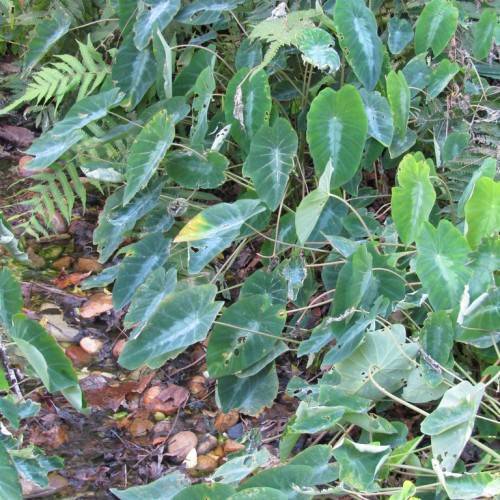
taro
Colocasia fallax
Cycle:
Perennial
Watering:
Frequent
Hardiness Zone:
8 - 10
Flowers:
Flowers
Sun:
part shade,part sun/part shade
Leaf:
Yes
Growth Rate:
Low
Maintenance:
Moderate
Drought Tolerant:
Yes
Salt Tolerant:
Yes
Invasive:
Yes
Tropical:
Yes
Care Level:
Medium
watering
Taro plants need to be watered frequently and consistently to ensure the best growth. Watering should be done 2 to 3 times a week, enough to keep the soil moist to the touch but not so much that water pools on the surface or runs off. During hot weather, taro plants may need to be watered more often. In the winter months, water less frequently and thoroughly drench the soil with water. Make sure the soil is well draining, as taro plants' roots can rot in overly wet or soggy soil. Allow the soil to dry out a bit between watering sessions.
sunlight
Taro (Colocasia fallax) requires medium to high light, with full sun best for plant growth. For optimal growth, the plant will need at least 4-6 hours of direct sunlight a day and 8-10 hours of indirect light. When growing in indoor conditions, the plant will need to be placed in locations near windows.
pruning
Taro (Colocasia fallax) plants should be pruned in the spring, just before new growth begins. Depending on the size of the plant, pruning should take place between 1/3 to 2/3 of the entire plant, leaving enough to allow for new growth. It is not necessary to prune taro on a regular basis, although if pruning is done, it should naturally balance out the shape and size of the plant. Remove foliages by cutting directly on the base of the plant.
